
Review on 🔒 TP-Link Safestream Multi WAN VPN Router TL-R600VPN with 1 Gigabit WAN, 3 Gigabit WAN/LAN, 1 Gigabit LAN Port, IPsec/L2TP/PPTP VPN Support, SPI Firewall, DoS Defense, and Lightning Protection by Andy Baudoin

The best router for SOHO and home use with multiple outlets!
So replacing my old tp-link 470+ router took almost a month of research and testing. Here's what I found out and I really hope it helps someone save some time. I was a network administrator over 20 years ago. I don't see myself as an expert far out of the field. I have two 4Mbps DSL lines coming into my house (I'm not near a city). I have an email server, a file server and our house is highly automated. There are only two of us at home, but my wife and I are avid gamers. We broadcast most of our television and film content. In our gym everything is connected with video trainers. I have Mac laptops and tablets, Windows, VOIP, Xbox and Linux gaming laptops all powered by this network. Every day I download games with 20-100 gigs in the background. I also have mesh WiFi that covers 3 floors of the house and outside the house. That gives you an idea of what my problems are. I want to use the full 8Mbps bandwidth for downloading and then scale it down so we can watch a movie, play a game, or listen to music around the house while the game keeps downloading. but slower. When we're not using the network, I want it to speed up again and go back to the full 8Mbps. I tested Ubiquiti Edgerouter 4, TP-Link TL-R600VPN V4, pfsense on an old gaming PC with Protectli Vault 4 quad port. Here's what I experienced. The first test was tp-link. It worked about 20 minutes after I took it out of the box, with mail server port forwarding. I was able to access my mail server from both the outside and inside, even though our phones pointed to a dynamic DNS address with no IP (something like loopback or NAT reflection). It just worked. But monitoring is almost non-existent, so I need an additional network monitor and the SMS connection it supports, but I decided to test some other routers. Setup was so easy, including QOS, that I've continued to use this router as the gold standard for setup. Second, I spent just over a week with Edgerouter 4. It got great reviews and the network monitor was the best of them all for me, with PfSense in second place and tp-link in the almost non-existent traffic monitor/graphics. I always knew what was going on and what the edge router was doing with its great dashboard. After a few days and many hundreds of pages of reading forums and talking to people because edgerouter has a very supportive community, I got it up and running with both WANs and mail servers. But the games weren't that great. Buffer lag, bloat, and constant shutdowns were just unacceptable, and I gave up after a week. Interestingly, first person shooters weren't the only problem, but Guildwars 2 would drop out 3-4 times an hour mid-adventure for either me or my wife, and sometimes we were able to play a full hour before one of the options was discarded. This has never happened with tp-link 470T+ in 4 years, PfSense or TP-Link TL-R600VPN. It was just the edge router. I had to put the edge router in the box and stop working with it. The last router I tested was pfSense with an old 3Ghz gaming console and a 4-port rugged console without a fan. I will say that PfSense was my favorite interface of all and what this software can do is amazing. It took me less than an hour to download the box and run it on my old computer. I bought an Intel dual port NIC from Amazon and with the NIC already installed on the motherboard I was able to connect 2 dls lines and a local ethernet line. PfSense was absolutely free! Only the cost of the hardware you need to run it. After a week of setup, the load balancing worked and I got a QOS that works better than the TP-Link TL-R600VPN. I was able to get maximum throughput with pfSense, but I was never able to get my mail server to work properly. I thought the problem was my old gaming PC and bought a fanless Protectli box - the quality is top notch and it only took a few minutes to install PfSense. I can't say enough about the little box and its capabilities. I think it only used 20W so it wasn't as much power as a gaming rig/router. But without PfSense working, I had to leave the box. As far as I remember I spent $350 for the box which is why it was the most expensive router out of 4 tested. Conclusion - I ended up going back to the TP-Link TL-R600VPN. Why? Well it was the lowest power consumption, it had 5 LAN ports, QOS and load balancing. Port forwarding and virtual servers work great, but most importantly everything works out of the box. I mean everything Dynamic DNS was easy to set up. I'm serious to say that it took less than 20 minutes to get the whole router up and running. I realize I could have spent a few more days or weeks getting the other routers up and running, but I finally figured out why? It's a home network, I learned everything I wanted at the moment and had a router that worked right away for a multi-WAN setup. Is it ideal - no. Can I control the network from its own interface - no! I don't work for any of those people and I don't work in the tech industry. I'm a purchasing manager so trust me many will be able to set them up better but that's my experience and like many others with a reasonable non-professional understanding of networks this review is for you.
- Best
- Packaging is ugly
New products
Comments (0)
Top products in 📶 Wifi Routers
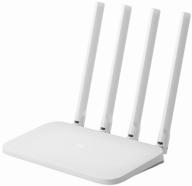
Wi-Fi router Xiaomi Mi Wi-Fi Router 4A Gigabit Edition Global, white

165 Review
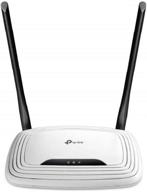
📶 Boost Your Wi-Fi Signal with TP-Link N300 Wireless Extender and Router - 2 High Power Antennas, Access Point, WISP, 300Mbps

216 Review
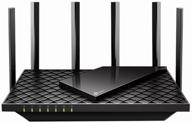
WiFi router TP-LINK Archer AX73, black

120 Review
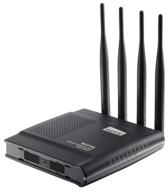
Wi-Fi router netis WF2780, black

111 Review
Another interesting products
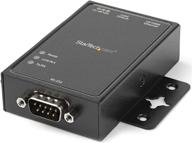
🌐 StarTech.com NETRS2321P: 1-Port RS232 to Ethernet IP Converter, Serial over IP Device Server - Black

5 Review
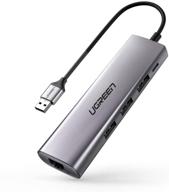
UGREEN USB 3.0 Ethernet Adapter Hub with RJ45: Fast Gigabit Ethernet Converter, 3 Ports USB 3.0 Hub Compatible for MacBook, iMac, Surface Pro, Chromebook, Laptop, PC

11 Review
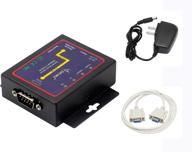
🔌 CERRXIAN RS232 to Ethernet Serial Device Server - TCP/IP Converter with 1Port DB9 RS232 Serial to Ethernet Connectivity

3 Review
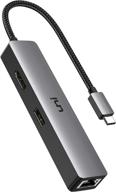
🔌 uni USB C Hub with Ethernet Adapter, 4K HDMI, Gigabit Ethernet, and 3 USB 3.0 Ports for MacBook Pro, iPad Pro, XPS

11 Review

